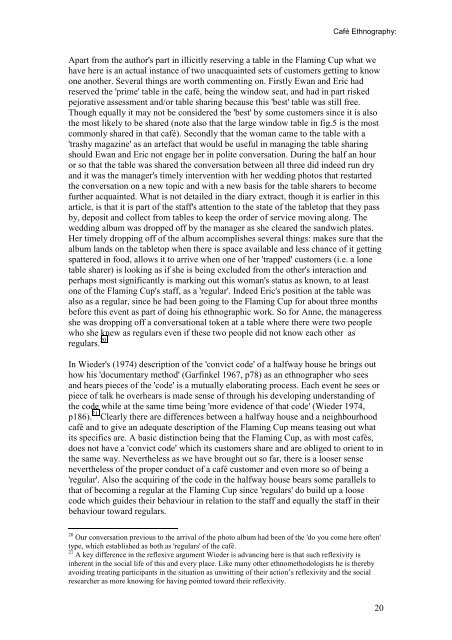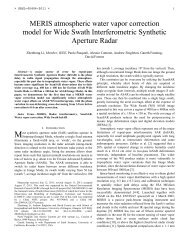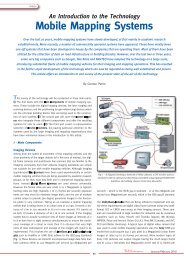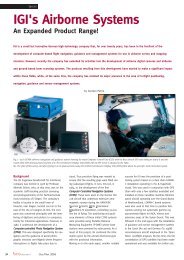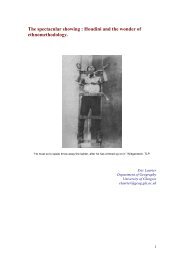Café Ethnography : the uses of tables and chairs
Café Ethnography : the uses of tables and chairs
Café Ethnography : the uses of tables and chairs
Create successful ePaper yourself
Turn your PDF publications into a flip-book with our unique Google optimized e-Paper software.
<strong>Café</strong> <strong>Ethnography</strong>:<br />
Apart from <strong>the</strong> author's part in illicitly reserving a table in <strong>the</strong> Flaming Cup what we<br />
have here is an actual instance <strong>of</strong> two unacquainted sets <strong>of</strong> customers getting to know<br />
one ano<strong>the</strong>r. Several things are worth commenting on. Firstly Ewan <strong>and</strong> Eric had<br />
reserved <strong>the</strong> 'prime' table in <strong>the</strong> café, being <strong>the</strong> window seat, <strong>and</strong> had in part risked<br />
pejorative assessment <strong>and</strong>/or table sharing because this 'best' table was still free.<br />
Though equally it may not be considered <strong>the</strong> 'best' by some customers since it is also<br />
<strong>the</strong> most likely to be shared (note also that <strong>the</strong> large window table in fig.5 is <strong>the</strong> most<br />
commonly shared in that café). Secondly that <strong>the</strong> woman came to <strong>the</strong> table with a<br />
'trashy magazine' as an artefact that would be useful in managing <strong>the</strong> table sharing<br />
should Ewan <strong>and</strong> Eric not engage her in polite conversation. During <strong>the</strong> half an hour<br />
or so that <strong>the</strong> table was shared <strong>the</strong> conversation between all three did indeed run dry<br />
<strong>and</strong> it was <strong>the</strong> manager's timely intervention with her wedding photos that restarted<br />
<strong>the</strong> conversation on a new topic <strong>and</strong> with a new basis for <strong>the</strong> table sharers to become<br />
fur<strong>the</strong>r acquainted. What is not detailed in <strong>the</strong> diary extract, though it is earlier in this<br />
article, is that it is part <strong>of</strong> <strong>the</strong> staff's attention to <strong>the</strong> state <strong>of</strong> <strong>the</strong> tabletop that <strong>the</strong>y pass<br />
by, deposit <strong>and</strong> collect from <strong>tables</strong> to keep <strong>the</strong> order <strong>of</strong> service moving along. The<br />
wedding album was dropped <strong>of</strong>f by <strong>the</strong> manager as she cleared <strong>the</strong> s<strong>and</strong>wich plates.<br />
Her timely dropping <strong>of</strong>f <strong>of</strong> <strong>the</strong> album accomplishes several things: makes sure that <strong>the</strong><br />
album l<strong>and</strong>s on <strong>the</strong> tabletop when <strong>the</strong>re is space available <strong>and</strong> less chance <strong>of</strong> it getting<br />
spattered in food, allows it to arrive when one <strong>of</strong> her 'trapped' customers (i.e. a lone<br />
table sharer) is looking as if she is being excluded from <strong>the</strong> o<strong>the</strong>r's interaction <strong>and</strong><br />
perhaps most significantly is marking out this woman's status as known, to at least<br />
one <strong>of</strong> <strong>the</strong> Flaming Cup's staff, as a 'regular'. Indeed Eric's position at <strong>the</strong> table was<br />
also as a regular, since he had been going to <strong>the</strong> Flaming Cup for about three months<br />
before this event as part <strong>of</strong> doing his ethnographic work. So for Anne, <strong>the</strong> manageress<br />
she was dropping <strong>of</strong>f a conversational token at a table where <strong>the</strong>re were two people<br />
who she knew as regulars even if <strong>the</strong>se two people did not know each o<strong>the</strong>r as<br />
regulars. 20<br />
In Wieder's (1974) description <strong>of</strong> <strong>the</strong> 'convict code' <strong>of</strong> a halfway house he brings out<br />
how his 'documentary method' (Garfinkel 1967, p78) as an ethnographer who sees<br />
<strong>and</strong> hears pieces <strong>of</strong> <strong>the</strong> 'code' is a mutually elaborating process. Each event he sees or<br />
piece <strong>of</strong> talk he overhears is made sense <strong>of</strong> through his developing underst<strong>and</strong>ing <strong>of</strong><br />
<strong>the</strong> code while at <strong>the</strong> same time being 'more evidence <strong>of</strong> that code' (Wieder 1974,<br />
p186). 21 Clearly <strong>the</strong>re are differences between a halfway house <strong>and</strong> a neighbourhood<br />
café <strong>and</strong> to give an adequate description <strong>of</strong> <strong>the</strong> Flaming Cup means teasing out what<br />
its specifics are. A basic distinction being that <strong>the</strong> Flaming Cup, as with most cafés,<br />
does not have a 'convict code' which its customers share <strong>and</strong> are obliged to orient to in<br />
<strong>the</strong> same way. Never<strong>the</strong>less as we have brought out so far, <strong>the</strong>re is a looser sense<br />
never<strong>the</strong>less <strong>of</strong> <strong>the</strong> proper conduct <strong>of</strong> a café customer <strong>and</strong> even more so <strong>of</strong> being a<br />
'regular'. Also <strong>the</strong> acquiring <strong>of</strong> <strong>the</strong> code in <strong>the</strong> halfway house bears some parallels to<br />
that <strong>of</strong> becoming a regular at <strong>the</strong> Flaming Cup since 'regulars' do build up a loose<br />
code which guides <strong>the</strong>ir behaviour in relation to <strong>the</strong> staff <strong>and</strong> equally <strong>the</strong> staff in <strong>the</strong>ir<br />
behaviour toward regulars.<br />
20 Our conversation previous to <strong>the</strong> arrival <strong>of</strong> <strong>the</strong> photo album had been <strong>of</strong> <strong>the</strong> 'do you come here <strong>of</strong>ten'<br />
type, which established as both as 'regulars' <strong>of</strong> <strong>the</strong> café.<br />
21 A key difference in <strong>the</strong> reflexive argument Wieder is advancing here is that such reflexivity is<br />
inherent in <strong>the</strong> social life <strong>of</strong> this <strong>and</strong> every place. Like many o<strong>the</strong>r ethnomethodologists he is <strong>the</strong>reby<br />
avoiding treating participants in <strong>the</strong> situation as unwitting <strong>of</strong> <strong>the</strong>ir action’s reflexivity <strong>and</strong> <strong>the</strong> social<br />
researcher as more knowing for having pointed toward <strong>the</strong>ir reflexivity.<br />
20


